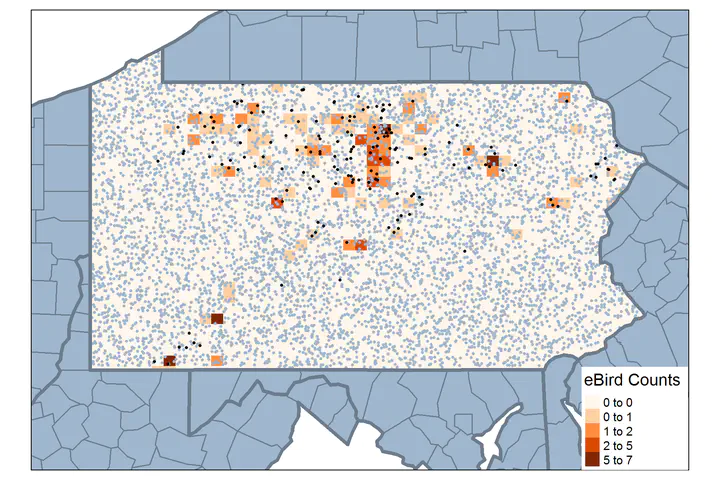 Image credit: Brent Pease
Image credit: Brent PeaseAbstract
Advances in species distribution modeling continue to be driven by a need to predict species responses to environmental change coupled with increasing data availability. Recent work has focused on development of methods that integrate multiple streams of data to model species distributions. Combining sources of information increases spatial coverage and can improve accuracy in estimates of species distributions. However, when fusing multiple streams of data, the temporal and spatial resolutions of data sources may be mismatched. This occurs when data sources have fluctuating geographic coverage, varying spatial scales and resolutions, and differing sources of bias and sparsity. It is well documented in the spatial statistics literature that ignoring the misalignment of different data sources will result in bias in both the point estimates and uncertainty. This will ultimately lead to inaccurate predictions of species distributions. Here, we examine the issue of misaligned data as it relates specifically to integrated species distribution models. We then provide a general solution that builds off work in the statistical literature for the change‐of‐support problem. Specifically, we leverage spatial correlation and repeat observations at multiple scales to make statistically valid predictions at the ecologically relevant scale of inference. An added feature of the approach is that addressing differences in spatial resolution between data sets can allow for the evaluation and calibration of lesser‐quality sources in many instances. Using both simulations and data examples, we highlight the utility of this modeling approach and the consequences of not reconciling misaligned spatial data. We conclude with a brief discussion of the upcoming challenges and obstacles for species distribution modeling via data fusion.